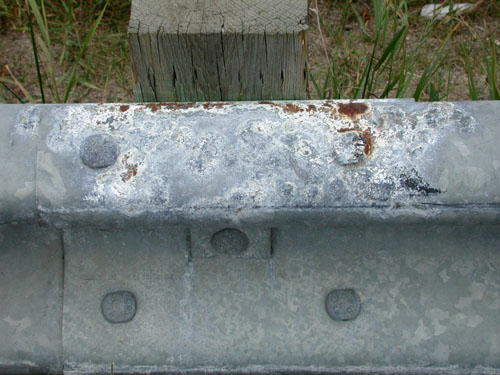
 |
The corrosion of metals can also occur in fresh water, seawater, salt solutions, and alkaline or basic media. In almost all of these environments, corrosion occurs importantly only if dissolved oxygen is also present. Water solutions rapidly dissolve oxygen from the air, and this is the source of the oxygen required in the corrosion process. The most familiar corrosion of this type is the rusting of iron when exposed to a moist atmosphere.
![]()
In this equation, iron combines with water and oxygen to produce an insoluble reddish-brown corrosion product that falls out of the solution, as shown by the downward pointing arrow.
During rusting in the atmosphere, there is an opportunity for drying, and this ferric hydroxide dehydrates and forms the familiar red-brown ferric oxide (rust) or Fe2O3, as shown below:
![]()
Similar reactions occur when zinc is exposed to water or moist air followed by natural drying.
![]()
![]()
The resulting zinc oxide is the whitish deposit seen on galvanized pails, rain gutters, and imperfectly chrome-plated bathroom faucets.

White rust on seaside road railing
As discussed previously, the iron that took part in the reaction with hydrochloric acid in had a valence of 2, whereas the iron that takes part in the reaction shown in the previous equation has a valence of 3. The clue to this lies in the examination of the equation for the corrosion product Fe(OH)3. Note that water ionized into H+ and
Also note that there is no oxidation or reduction (electron transfer) during either reaction. In both cases the valences of the elements on the left of each reaction remain what it is on the right. The valences of iron, zinc, hydrogen, and oxygen elements remain unchanged throughout the course of these reactions, and it is consequently not possible to divide these reactions into individual oxidation and reduction reactions.
| (previous) | Page 3 of 3 | (next Module) |